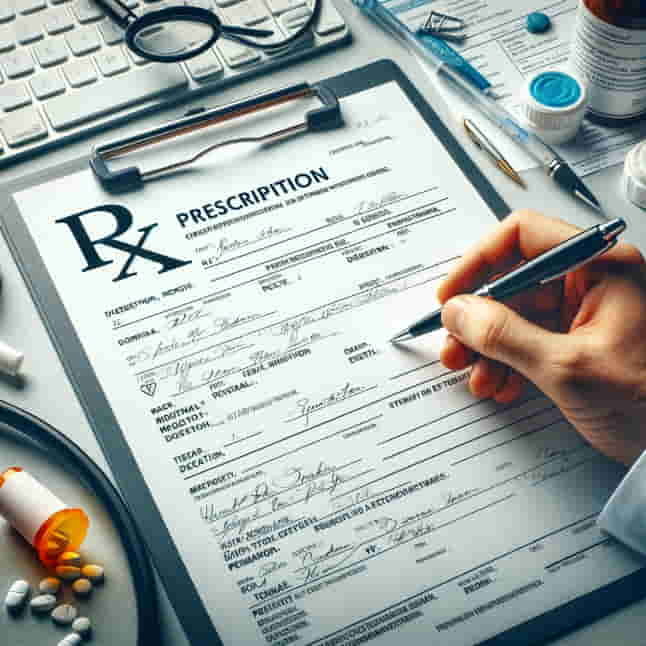Navigating the Terrain: Strategies for Managing the Cost of Prescriptions Without Insurance

In a world where healthcare costs continue to rise, many individuals find themselves grappling with the financial burden of prescription medications, especially in the absence of insurance coverage. The escalating cost of prescriptions without insurance can be overwhelming, leaving patients seeking viable strategies to manage their healthcare expenses without compromising their well-being. In this article, we will explore practical and informative strategies to help patients refill their prescriptions while navigating the challenging landscape of the cost of prescriptions without insurance.
Understanding the Landscape: The Rising Cost of Prescriptions Without Insurance
The cost of prescriptions without insurance has been a growing concern, with studies indicating a steady increase in medication prices over the past decade. According to a report by the Kaiser Family Foundation, the average annual cost of prescription drugs in the United States is significantly higher than in other developed countries. This leaves many individuals, especially those without insurance, struggling to afford essential medications to manage chronic conditions.
It’s crucial to recognize the importance of proactive measures in managing the cost of prescriptions without insurance. Being informed and adopting strategic approaches can make a significant difference in accessing necessary medications without compromising financial stability.
Generic Alternatives: A Cost-Effective Solution
One effective strategy to mitigate the cost of prescriptions without insurance is opting for generic alternatives. Generic medications, which contain the same active ingredients as their brand-name counterparts, can offer substantial cost savings. Studies have consistently shown that choosing generic drugs over brand-name versions can result in significant reductions in out-of-pocket expenses.
In a survey published in the Journal of the American Medical Association, researchers found that, on average, generic drugs are 85% less expensive than their brand-name equivalents. Patients can discuss with their healthcare providers the possibility of switching to generic medications to manage the cost of prescriptions without insurance while maintaining the same therapeutic benefits.
Prescription Assistance Programs: Bridging the Financial Gap
For individuals facing financial challenges in affording their medications without insurance, prescription assistance programs can be a valuable resource. These programs, often offered by pharmaceutical companies, nonprofit organizations, or government agencies, aim to provide financial support to eligible individuals.
Research from the National Academy for State Health Policy indicates that many states offer prescription assistance programs to help residents access affordable medications. These programs may have specific eligibility criteria, such as income limitations, but can serve as a lifeline for those navigating the cost of prescriptions without insurance.
Comparison Shopping: Finding the Best Prices
Just as with any other consumer product, prices for prescription medications can vary between pharmacies. Comparison shopping is a practical strategy to identify the most cost-effective options for obtaining medications without insurance coverage.
Several online tools and apps are available to assist patients in comparing prescription prices at different pharmacies. These resources empower individuals to make informed choices, potentially saving them a substantial amount on the cost of prescriptions without insurance. Additionally, exploring discounts and pharmacy loyalty programs can further contribute to financial relief.
Telemedicine Consultations: A Convenient Approach
In recent years, the rise of telemedicine has provided a convenient and cost-effective alternative for medical consultations. Many healthcare providers now offer virtual appointments, allowing patients to discuss their health conditions and refill prescriptions without the need for in-person visits.
Research from the American Journal of Managed Care highlights the growing acceptance of telemedicine as a viable healthcare delivery option. Utilizing telemedicine services can save patients both time and money, making it an attractive option for managing the cost of prescriptions without insurance.
Patient Assistance Programs: A Supportive Network
Patient assistance programs, often facilitated by pharmaceutical companies, aim to provide free or discounted medications to individuals who meet specific eligibility criteria. These programs can be instrumental for those facing financial hardships in managing the cost of prescriptions without insurance.
Reputable organizations like NeedyMeds and Partnership for Prescription Assistance connect patients with prescription assistance programs, offering a lifeline for individuals in need. By accessing these programs, patients can receive the medications they require without bearing the full financial burden.
Conclusion: Empowering Patients in the Face of Prescription Costs
Navigating the landscape of the cost of prescriptions without insurance requires a proactive and informed approach. By considering generic alternatives, exploring prescription assistance programs, engaging in comparison shopping, leveraging telemedicine services, and tapping into patient assistance programs, individuals can empower themselves to manage the financial aspects of their healthcare effectively.
It is essential for patients to stay informed about available resources and take proactive steps to ensure access to necessary medications. By adopting these strategies, individuals can navigate the challenges of the cost of prescriptions without insurance while prioritizing their health and well-being.

Leave a Reply